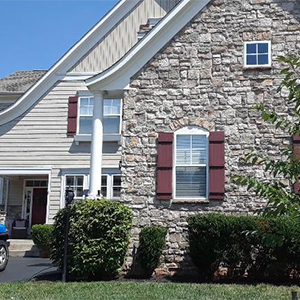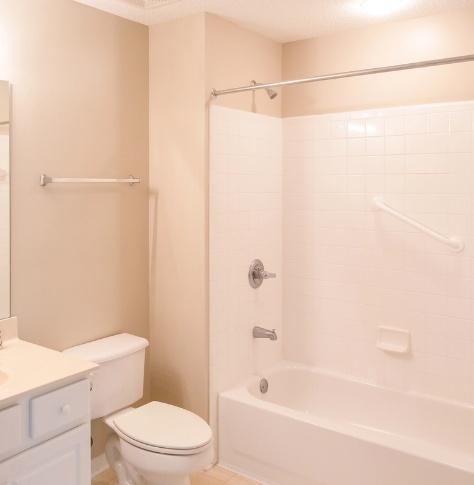Aging in Place
 Like every other person old enough to give it any thought, I want to live in my own
home for as long as I can. I also don’t want to be a burden on my children who will
have to help make that possible. The trouble is, by the time we get that old we often
don’t realize how difficult it is for our children to keep us at home safely. Even
when they’re not here helping us, they worry about us.
Like every other person old enough to give it any thought, I want to live in my own
home for as long as I can. I also don’t want to be a burden on my children who will
have to help make that possible. The trouble is, by the time we get that old we often
don’t realize how difficult it is for our children to keep us at home safely. Even
when they’re not here helping us, they worry about us.
For eleven years, I wrote a blog for a home healthcare agency with the motto, “Keeping Home an Option for a Lifetime.” Having that option presupposes that as we get older and our self-care needs increase, we are aware of the in-home safeguards and resources that are available, and we have the money and the living space for 24/7 in-home care.
 At the January 2025 Symposium, “Aging with WISE Purpose,” hosted by Gov. Spencer J. Cox, a consistent theme was the need for all attendees
to do a better job of making the general public more aware of all the resources available
to the elderly and their caregivers. During the session on “Independence: Aging in
Place,” I almost cheered out loud when Dr. Beth Fauth said, “Don’t ever tell your
parents they won’t have to leave their home.” Several people I know have said that
and then found themselves in impossible situations.
At the January 2025 Symposium, “Aging with WISE Purpose,” hosted by Gov. Spencer J. Cox, a consistent theme was the need for all attendees
to do a better job of making the general public more aware of all the resources available
to the elderly and their caregivers. During the session on “Independence: Aging in
Place,” I almost cheered out loud when Dr. Beth Fauth said, “Don’t ever tell your
parents they won’t have to leave their home.” Several people I know have said that
and then found themselves in impossible situations.
After other panel members gave sage advice on what must be done to make aging in place possible, Fauth wisely pointed out, “Cognitive impairment is the tipping point for being able to stay in our homes. With the number of people diagnosed with Alzheimer’s doubling every year, there is definitely more to aging in place than most people might think. Modifying the existing home becomes irrelevant.” Because my husband died of Alzheimer’s, I knew exactly what she was talking about.
The great majority of older individuals would choose aging at home, rather than moving to an assisted living or skilled nursing facility. And who can blame us? Why wouldn’t we want the comfort of familiar surroundings, the independence to go wherever, whenever we wish, the freedom to prepare the meals we want when we want, and other freedoms. But are all of those “wants” possible in our own homes until the day we die? And is the home we’re living in now the best place for us to have those advantages? Several of my older neighbors have had to move just because of the number of stairs in their homes.
Dr. Fauth also pointed out that a lot of what makes a place a home is memories made and ongoing relationships. Age friendly places are an ecosystem with connections. It is possible for family members to replicate the feeling of home and even improve some of the freedoms offered at home through having their loved one age in place in assisted living or residential long-term care facilities.
Many residents enjoy more social engagement and activities, choice of meals and snacks, mobility through available transportation, on-site access to services like hair and foot care, directed exercise, and a sense of this being their own place. The comforts of home also include human contact and ease of access to the services needed. When my father was in assisted living, we made sure that every day there was one family member there to share a meal with him.
Often because of financial limitations, living at home is the only option. The health of family or neighbor caregivers needs to be considered. In Utah, there are over 450,000 unpaid family caregivers, some of whom have had to quit their jobs to be on call for a loved one 24/7. Some die before the person they are caring for. Most caregivers don’t know what resources are available to them or who to turn to turn for help. Many caregivers are notoriously bad at asking for help. We need to be a listening ear, ask purposeful questions about what they need, and offer specific help. See How Can I Help? - Utah Commission on Aging - University of Utah.
While aging at home sounds to us older folks like the perfect plan for growing older, there are some real issues to be thought through as well:
- Will I be safe living by myself, especially without making major renovations to my home?
- How will I get around when driving, or even walking, is challenging?
- What happens if I get sick or injured and no one is near to help?
 Here are a few tips for what to do now to ensure we or a loved one is prepared for these needs and others in the future:
Here are a few tips for what to do now to ensure we or a loved one is prepared for these needs and others in the future:
- Evaluate the home, both inside and out, from the perspective of senior safety. Verify
that:
- Grab bars are in place near the tub and toilet.
- Throw rugs and other fall hazards are removed.
- There’s plenty of lighting, including in hallways and stairways.
- Commonly used items are within easy reach.
- Emergency numbers are posted in a highly visible location.
- Create a transportation plan that can be put into action when driving is no longer
possible:
- Explore public transportation choices that are available and easily accessible.
- Assemble a volunteer tree of trusted people the older person can call on for transportation when needed: friends, relatives, neighbors, religious organizations, local senior centers, etc.
- Ensure the older person is able to access the tech tools that can be used in an emergency to obtain help when alone, such as a PERS (personal emergency response system).
Engaging the services of a home care agency is one way to ensure older adults stay safe and well cared for at home. In-home care services can be a long-term, practical solution for many. Trained caregivers have experience in providing personal care services, transportation, meal preparation, and companionship, and they can be there for as much or as little care as required. They will develop an individualized care plan then regularly monitor that plan and make adjustments as needs change. Of course, there is cost involved in this type of care, based on the amount of care needed.
To decide if you or someone you love could benefit from the support of a skilled caregiver as an alternative to making the major decision to sell their home and move into an assisted living facility, pay attention to the degree of functioning in the following two areas:
- Activities of Daily Living: These activities are essential to caring for oneself, such as taking a bath, putting on clothes, getting up out of a bed or a chair, using the bathroom, eating and walking.
- Activities to Maintain Independence: These are activities that include planning and preparing meals, managing money (writing checks, paying bills), shopping for groceries or personal items, keeping up a residence/taking care of housekeeping, taking medications, using a telephone, taking care of mail, and traveling by car or public transportation.
Negative perceptions of aging can actually reduce our number of years of life. All of us must have conversations now about how and where we want to age and make plans for what and who will make that possible for us. With a plan in place, we can spend less time worrying about the future and more time enjoying life every day.
